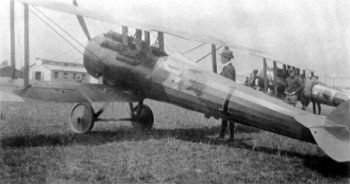 |
Eddie Rickenbacker was born in Columbus, Ohio, USA, in 1890, the son of Swiss immigrants. His surname originally was spelled Rickenbacher. The sound of it caused Rickenbacker many problems and, as a result of World War I, he changed it. In 1918, he became Eddie "Rickenbacker"--with the change of that single letter somehow giving him comfort. His father, William, was a day labourer who regularly beat him with a switch. Rickenbacker responded by becoming a juvenile delinquent--a small-time petty thief and bully who was so quick with his fists that his impoverished parents feared he would wind up in reform school. Yet when his father was murdered on the job, young Edd, as he was then called, underwent a transformation. He was not quite 14, but he assumed responsibility for his family, a task usually shouldered by an eldest son. (Rickenbacker did have an older brother.) Rickenbacker immediately dropped out of school to begin working 72-hour weeks in a sweatshop glass factory. At this job, he earned a nickel per hour--$182 per year. He didn't have to spend a year there, though, for he was at the start of a career that would see him swiftly take on a series of ever more responsible jobs for which he was both too young and too uneducated. Rickenbacker was on the road to riches. He found he was a natural salesman and manager. Soon he was earning $150 a month at a time when lawyers and doctors made less. By age 19, he was 6 feet, 2 inches tall, weighed 165 pounds, and was sharpening his skills as a professional racing car driver. Within a few years, he had reached the top of his new profession, earning $60,000 the last year he raced. That was the equivalent today of $1 million. |



